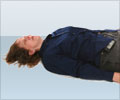A Danish study has found that 31% of people who faint lose their job and are at increased risk for occupational accidents.
- People who suffer from fainting episodes at work are at a 2 fold higher risk of losing their job.
- Fainting or syncope can increase the risk for occupational accidents among people by 1.4 fold.
- People who are in menial jobs and who handle heavy machinery are at an increased risk of being injured from accidents.
- There was an increase in the risk of occupational accidents by 1.4 fold.
- There was an increased risk of job loss by 2 fold.
- 31% of people with syncope lost their jobs compared to 15% in the control group.
- Risk of accidents at work and job loss were more pronounced among people who were young, had poor socioeconomic status, had depression or cardiovascular disease along with recurrent syncope.
An individual who is employed needs to feel secure with the job and should be able to maintain a full time employment. Insecurity at the workplace due to syncope can however be stressful and cannot be measured in terms of mortality and hospitalization. An employment not only helps the individual gain monetary compensation in the form of a regular salary but can also help in improving self-esteem, which reflects on the quality of life led by the individual.
Studying Syncope and Its Effect on Employment:
The data for the study was obtained from Denmark’s population based National registers, with the median age of the participants being 48 and 49.7% of them being male. The research team selected 21,729 patients who needed to be hospitalized or required emergency care after a first time diagnosis of syncope.
- 49.5% were employed at the time of the incident and returned to work within a month of being discharged.
- 622 patients had a subsequent accident at the workplace.
- 36 of the patients had severe injuries like a fracture, internal bleeding or a crush amputation.
- The accidents were more among patients who were involved in menial jobs.
Dr. Nume stated that syncope can be managed effectively by including interventions appropriate for the condition. This will help in securing employment and will also aid in job selection whereby operating heavy equipment should be avoided. The scientists believe that this study could help in stimulating more research on why syncope leads to a loss in employment. There is an increased need to raise awareness about finding jobs that are less risky and which does not involve the use of heavy machinery for patients with syncope.
There are certain triggers which cause the autonomous nervous system (ANS) that controls involuntary actions like heart rate and blood pressure, to malfunction.
- Coughing
- Heat exposure
- Unpleasant sight
- Heavy sweating
- Dehydration
- Emotional stress
- Overcrowding
- Sudden pain
- Laughing
- Sitting or standing suddenly or standing for long periods
What to do when someone Faints
In the event that a colleague faints at the workplace, here are a few tips to remember
- Place the individual on the floor. The legs should be raised up and the head should be lower than the rest of the body so that there is improvement in the blood circulation to the brain.
- Notice if the color of their face is back to being healthy or if it still looks pale.
- Loosen any clothing that could be restricting the flow of blood like a neck scarf or buttons.
- Remember not to crowd around the patient as there should be fresh air around the individual.
- Speak to the patient and watch out for signs of recovery.
- If there is no sign of recovery, call for medical help immediately.
References:
- Martin H. Ruwald et al. Syncope and Its Impact on Occupational Accidents and Employment: A Danish Nationwide Retrospective Cohort Study. Circulation: Cardiovascular Quality and Outcomes, April 2017 DOI: 10.1161/CIRCOUTCOMES.116.003202









